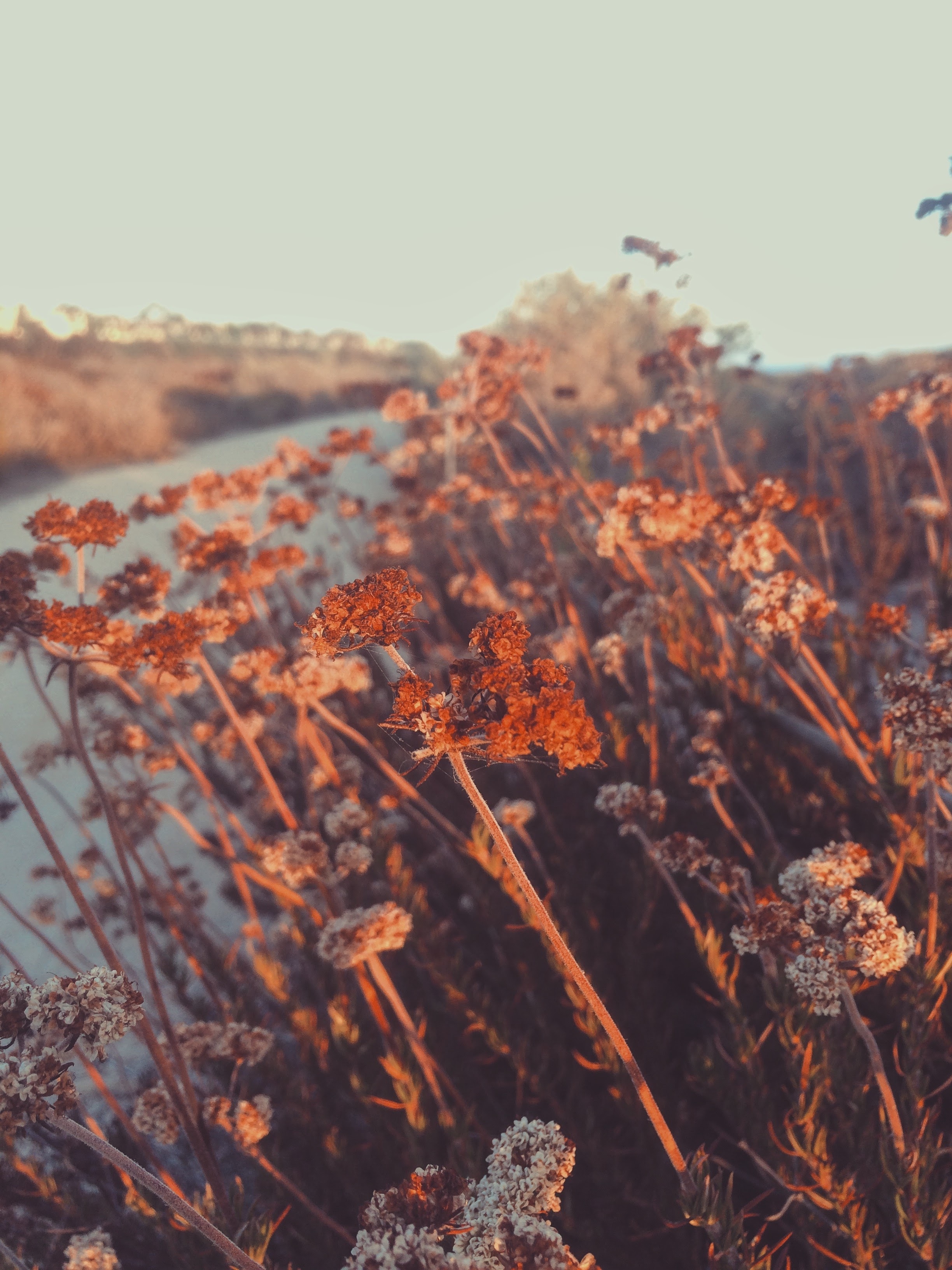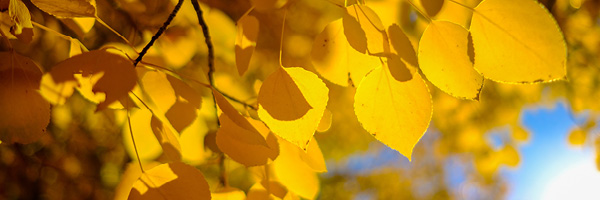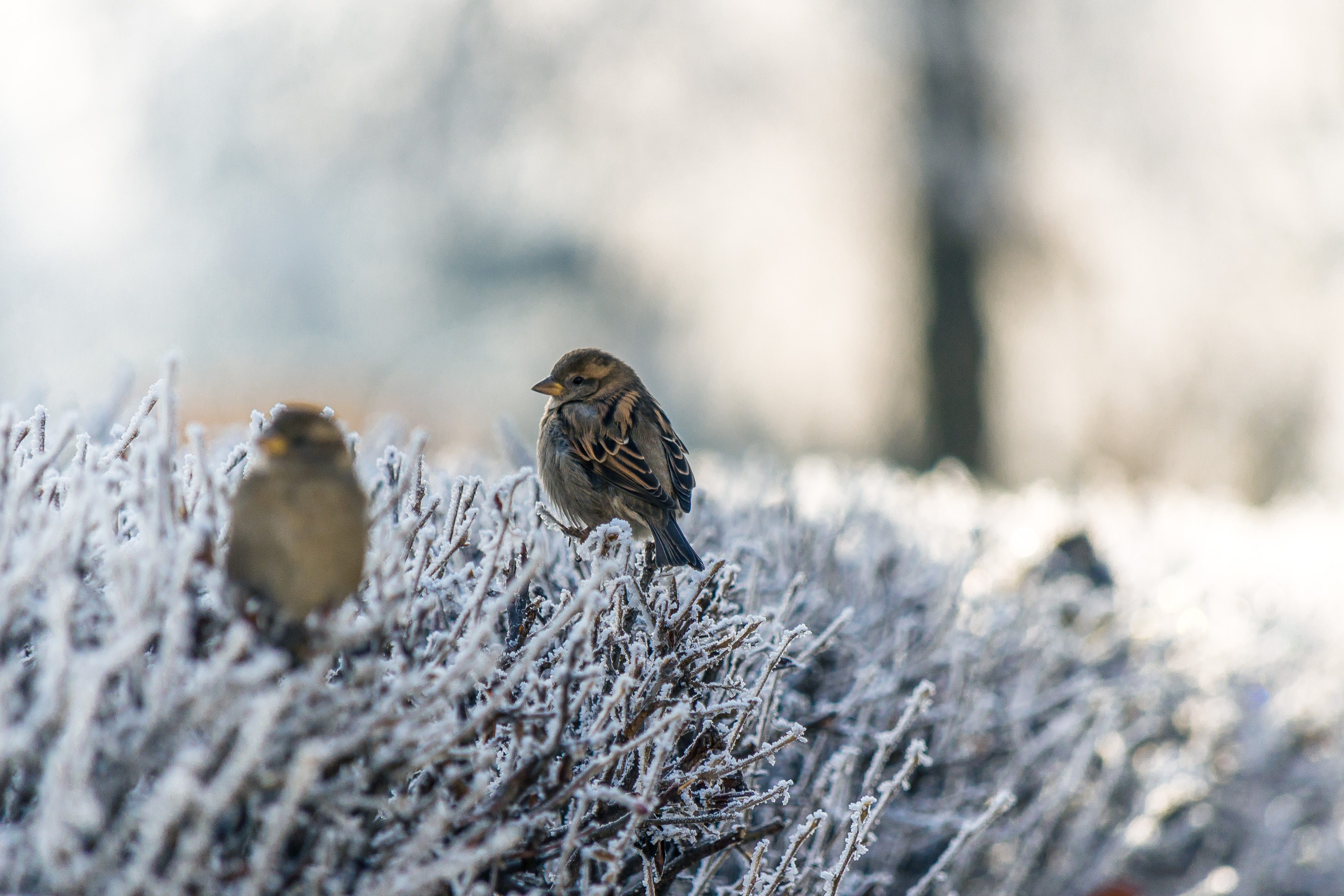We love talking about all things gardening and water conservation through landscape change! Submit your question(s) for the xeric plant enthusiasts – aka the Garden In a Box team – to GardenInfo@ResourceCentral.org, and sign up for our monthly Garden In A Box newsletter for more helpful tips and answers! (Visit our Garden In A Box homepage to sign up)
General Fall To Do List:
With fall approaching, completing fall maintenance in your garden may be getting higher on your to do list. While there are certainly some beneficial tasks to complete in the fall garden before the season is through, we definitely believe less is more. This article from Harlequin’s Gardens in Boulder is a great reminder of just that: “Relax! Reconsidering Garden Cleanup“.
For those tasks that can’t wait until spring, we’ve outlined our tips below.
• Clean up messes. Remove all weeds and dead or dying annuals.
Remove all diseased plants and dispose in the trash (not the compost bin!)
Rake up leaves and use as mulch in garden beds if desired*
• Cut back or deadhead. In the fall, much cutting back is cleaning up dead stems and foliage or clipping spent blossoms to prevent re-seeding. But with some perennials, you may want to leave the last blooms of autumn to go to seed, providing winter interest when topped with snow and then enjoying visits from the hungry birds they bring in.
• Divide. Dividing keeps fast growing perennials under control and can help reinvigorate those plants that need the boost. Learn more about dividing perennials here.
• Plant any bulbs or perennials you may want to bloom in spring.
• Water all trees and shrubs deeply at least once before the first snowfall.
• Mulch moist soil on a warm day after the first hard freeze. Be careful not to smother smaller plants and leave 2-3″ mulch free around shrubs and trees. When the ground alternatively freezes and thaws in winter, applying a fresh layer of mulch after first freeze keeps the soil temperatures more constant. This reduces the likelihood of plants being heaved out of the ground exposing the roots to the harsh winter air. You can use dried leaves*, straw, or pine boughs which can be removed in early spring when new growth begins to emerge.
*A note on using dried leaves. The leaves of some trees could be harmful to your soil and plants because of the chemical components in the laves, including oak, black walnut, and beech. We recommend learning what types of trees you have in your yard, and looking into the usefulness of their leaves as mulches before using them!
Plants That May Benefit From Fall Maintenance:
| Cut back or Deadhead:
• Prostrate Speedwell – after the first killing frost, cut stems down to an inch or two. • Balloon Flower – remove dead stems after leaves drop. Cut whole plant back to 6” after first frost • Columbine (all species) – cut stems down to basal foliage but allow some to go to seed! • Clustered Bellflower – cut stems down to basal foliage • Palace Purple Coral Bells – cut back to just above ground level in late fall. • Windflower – once the foliage has died back in fall cut stems down to just above ground level • Plumbago – cut back to just above ground level in late fall. • Dwarf Blue Larkspur – once the foliage has died back in fall cut stems down to just above ground level • Miniature Hollyhock – snip spent flower heads leaving basal foliage. • Yarrow (all species) – snip spent flower heads leaving basal foliage. Yarrow will spread heartily if allowed to re-seed. |
Divide:
• Blue Native Harebell – spring or fall division okay • Palace Purple Coral Bells – divide every 3-4 years in fall |
| Mulch:
• Plumbago – re-mulch in late fall |
|
| Leave autumn blooms standing for winter interest, bird food, or self-seeding:
• Coneflowers • Penstemons • Autumn Joy Stone Crop • Black-Eyed Susan • Double Bubblemint Hyssop • Grasses (most species) |
Many of the plants in this year’s Fall collection of Garden In A Box need no winter preparation:
 Blanket Flower, Fringed Sage, Knautia, Oat Grass, European Pasque Flower, Rocky Mountain Penstemon, Evergreen Candytuft, Santa Fe Aster, Blue Grama Grass, Butterfly Weed, Prairie Winecups, Alpine Aster, Blue Cranesbill, Corsican Violet, Summer Breeze Whirling Butterflies, Sticky Cranesbill, White Daylily, Crystal River Speedwell, Serbian Bellflower, Dwarf Blue Rabbitbrush, Little Blustem Grass, Native Gayfeather, Blue Flax, Firecracker Penstemon, Prairie Red Coneflower, Yellow Columbine,
Blanket Flower, Fringed Sage, Knautia, Oat Grass, European Pasque Flower, Rocky Mountain Penstemon, Evergreen Candytuft, Santa Fe Aster, Blue Grama Grass, Butterfly Weed, Prairie Winecups, Alpine Aster, Blue Cranesbill, Corsican Violet, Summer Breeze Whirling Butterflies, Sticky Cranesbill, White Daylily, Crystal River Speedwell, Serbian Bellflower, Dwarf Blue Rabbitbrush, Little Blustem Grass, Native Gayfeather, Blue Flax, Firecracker Penstemon, Prairie Red Coneflower, Yellow Columbine,
This could be a good list to keep for future reference for garden planning if you are like me and want to keep maintenance at a minimum!













